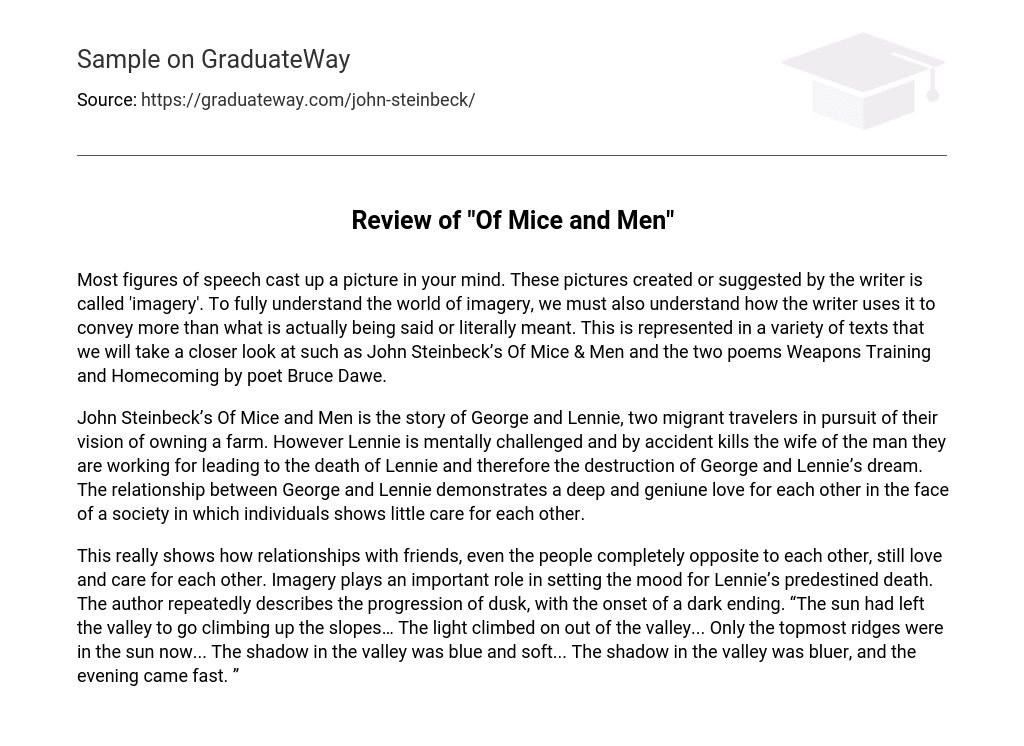Most figures of speech cast up a picture in your mind. These pictures created or suggested by the writer is called ‘imagery’. To fully understand the world of imagery, we must also understand how the writer uses it to convey more than what is actually being said or literally meant. This is represented in a variety of texts that we will take a closer look at such as John Steinbeck’s Of Mice & Men and the two poems Weapons Training and Homecoming by poet Bruce Dawe.
John Steinbeck’s Of Mice and Men is the story of George and Lennie, two migrant travelers in pursuit of their vision of owning a farm. However Lennie is mentally challenged and by accident kills the wife of the man they are working for leading to the death of Lennie and therefore the destruction of George and Lennie’s dream. The relationship between George and Lennie demonstrates a deep and geniune love for each other in the face of a society in which individuals shows little care for each other.
This really shows how relationships with friends, even the people completely opposite to each other, still love and care for each other. Imagery plays an important role in setting the mood for Lennie’s predestined death. The author repeatedly describes the progression of dusk, with the onset of a dark ending. “The sun had left the valley to go climbing up the slopes… The light climbed on out of the valley… Only the topmost ridges were in the sun now… The shadow in the valley was blue and soft… The shadow in the valley was bluer, and the evening came fast. ”





